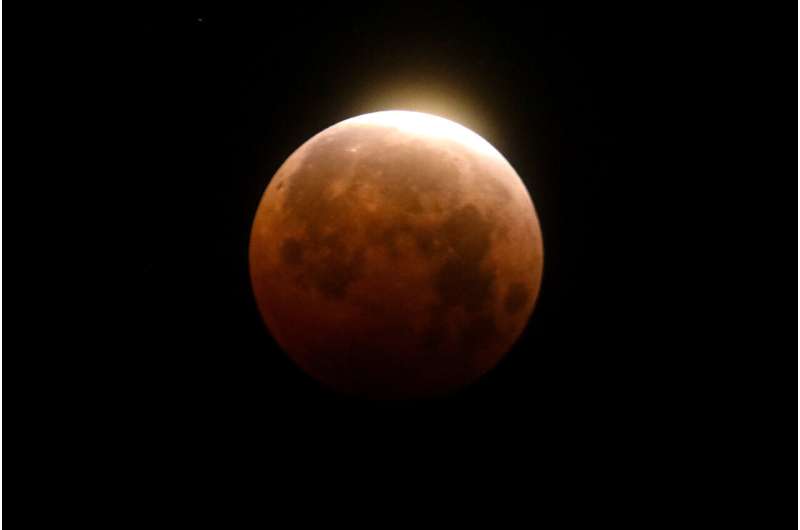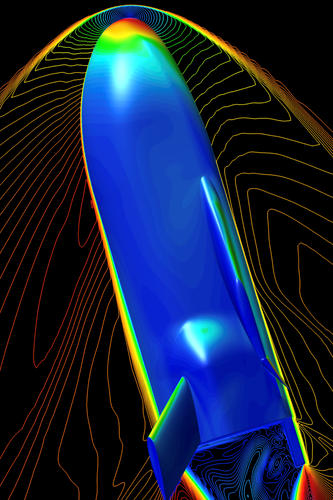
Copernical Team
Moon goes blood red this weekend: 'Eclipse for the Americas'

Gaia – ESA’s billion star surveyer
 Video:
00:01:00
Video:
00:01:00
ESA’s Gaia space telescope revolutionises our understanding of the Milky Way. It scans the sky to measure the position, movement, distance, and characteristics of billions of stars. It is creating the most precise map of our home galaxy yet, providing clues to its origin and evolution. Gaia not only studies the stars, but also what is in between them, as well as asteroids and planetary moons in our Solar System, binary stars and exoplanets, and quasars and galaxies outside of the Milky Way. Gaia provides us with a wealth of data, giving us a new sense of
World View partners with SET to collect scientific data on earth's stratosphere
 World View, the leading stratospheric ballooning and space tourism company, has announced a partnership with Space Environment Technologies (SET) to include a suite of technologies aboard World View space capsules that will measure space radiation and other forms of data about Earth's atmosphere. SET's system, coined ARMAS (for "Automated Radiation Measurements for Aerospace Safety"), will accom
World View, the leading stratospheric ballooning and space tourism company, has announced a partnership with Space Environment Technologies (SET) to include a suite of technologies aboard World View space capsules that will measure space radiation and other forms of data about Earth's atmosphere. SET's system, coined ARMAS (for "Automated Radiation Measurements for Aerospace Safety"), will accom Scientists succeed for first time growing plants in soil from the moon
 Scientists have managed to grow plants in lunar soil for the first time ever, setting the stage for astronauts to potentially grow their own food on the moon during future missions.
University of Florida researchers were able to grow the plants in small samples of lunar soil - also known as lunar regolith - gathered during the Apollo 11, 12 and 17 missions in the 1960s and 1970s. But
Scientists have managed to grow plants in lunar soil for the first time ever, setting the stage for astronauts to potentially grow their own food on the moon during future missions.
University of Florida researchers were able to grow the plants in small samples of lunar soil - also known as lunar regolith - gathered during the Apollo 11, 12 and 17 missions in the 1960s and 1970s. But DOD focused on hypersonic missile defense development, Admiral Says
 Cruise missiles follow unpredictable flight paths and are now capable of supersonic and hypersonic speeds. Russia and China are developing advanced cruise missiles that can be launched from aircraft, ground launchers and ships or submarines, along with hypersonic missile capabilities.
Navy Vice Adm. Jon A. Hill, director, Missile Defense Agency, discussed the defense against these missiles
Cruise missiles follow unpredictable flight paths and are now capable of supersonic and hypersonic speeds. Russia and China are developing advanced cruise missiles that can be launched from aircraft, ground launchers and ships or submarines, along with hypersonic missile capabilities.
Navy Vice Adm. Jon A. Hill, director, Missile Defense Agency, discussed the defense against these missiles Chinese military deeply alarmed over Starlink's dual-use capabilities
 Beijing's concerns echo criticisms of the South African-born billionaire's satellite internet system by Russia. On Sunday, Roscosmos chief Dmitry Rogozin warned that Elon Musk would be held accountable for supplying Starlink internet terminals to neo-Nazi militants fighting in Ukraine.
SpaceX's plans to increase the constellation of Starlink internet satellites from 12,000 to 42,000 "shoul
Beijing's concerns echo criticisms of the South African-born billionaire's satellite internet system by Russia. On Sunday, Roscosmos chief Dmitry Rogozin warned that Elon Musk would be held accountable for supplying Starlink internet terminals to neo-Nazi militants fighting in Ukraine.
SpaceX's plans to increase the constellation of Starlink internet satellites from 12,000 to 42,000 "shoul Terran Orbital delivers first bus in support of SDA's Transport Layer Tranche 0
 Terran Orbital Corporation (NYSE: LLAP), a global leader in satellite solutions, primarily serving the United States aerospace and defense industry, has announced the successful delivery of the first of ten satellite buses to Lockheed Martin in support of the Space Development Agency's Tranche 0 Transport Layer. This foundation layer represents the initial step in building an interoperable, conn
Terran Orbital Corporation (NYSE: LLAP), a global leader in satellite solutions, primarily serving the United States aerospace and defense industry, has announced the successful delivery of the first of ten satellite buses to Lockheed Martin in support of the Space Development Agency's Tranche 0 Transport Layer. This foundation layer represents the initial step in building an interoperable, conn MIT expands research collaboration with Commonwealth Fusion Systems
 MIT's Plasma Science and Fusion Center (PSFC) will substantially expand its fusion energy research and education activities under a new five-year agreement with Institute spinout Commonwealth Fusion Systems (CFS).
"This expanded relationship puts MIT and PSFC in a prime position to be an even stronger academic leader that can help deliver the research and education needs of the burgeoning
MIT's Plasma Science and Fusion Center (PSFC) will substantially expand its fusion energy research and education activities under a new five-year agreement with Institute spinout Commonwealth Fusion Systems (CFS).
"This expanded relationship puts MIT and PSFC in a prime position to be an even stronger academic leader that can help deliver the research and education needs of the burgeoning Scientists successfully grow plants in soil from the Moon
 That's one small pot of soil, one giant leap for man's knowledge of space agriculture: scientists have for the first time grown plants in lunar soil brought back by astronauts in the Apollo program.
The ground-breaking experiment, detailed in the journal Communications Biology on Thursday, has given researchers hope that it may be possible to one day grow plants directly on the Moon.
Tha
That's one small pot of soil, one giant leap for man's knowledge of space agriculture: scientists have for the first time grown plants in lunar soil brought back by astronauts in the Apollo program.
The ground-breaking experiment, detailed in the journal Communications Biology on Thursday, has given researchers hope that it may be possible to one day grow plants directly on the Moon.
Tha 
 Image:
Fly far, fly true
Image:
Fly far, fly true 


































